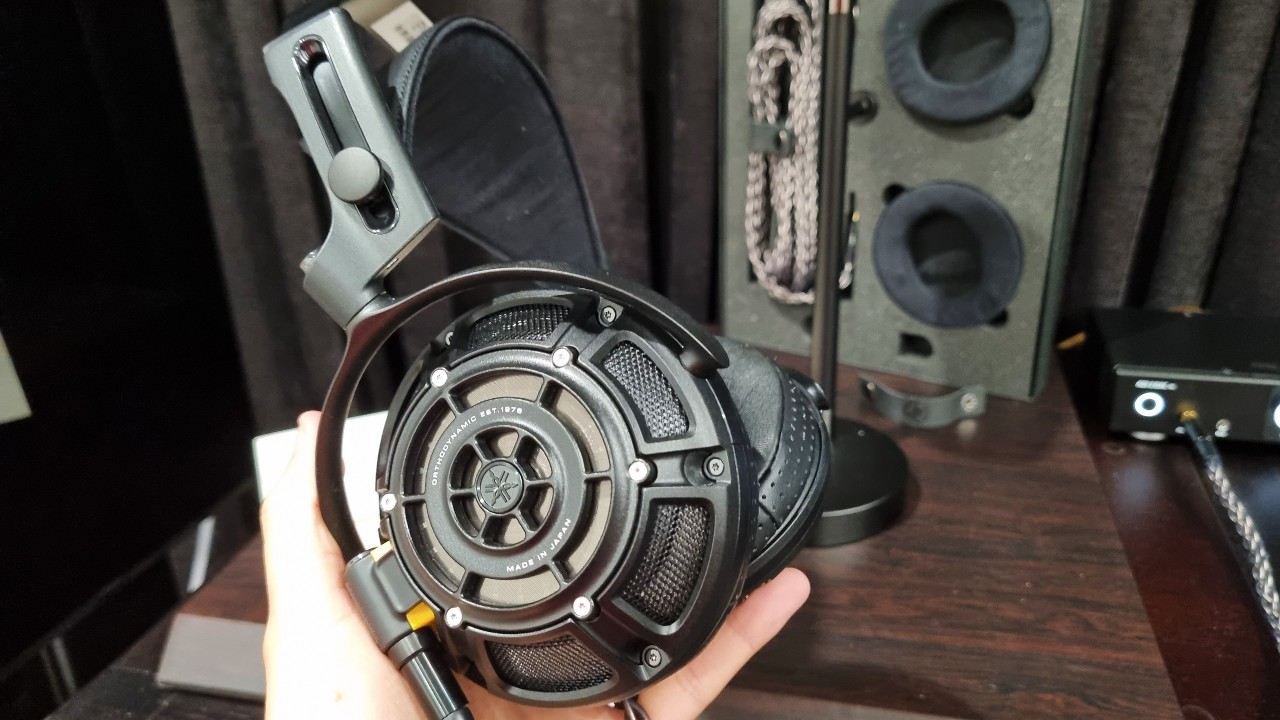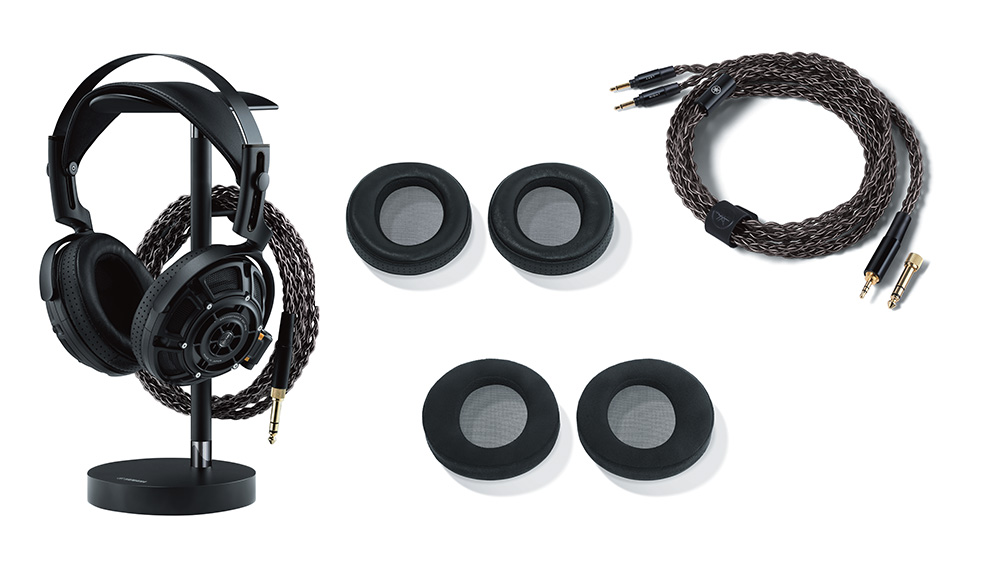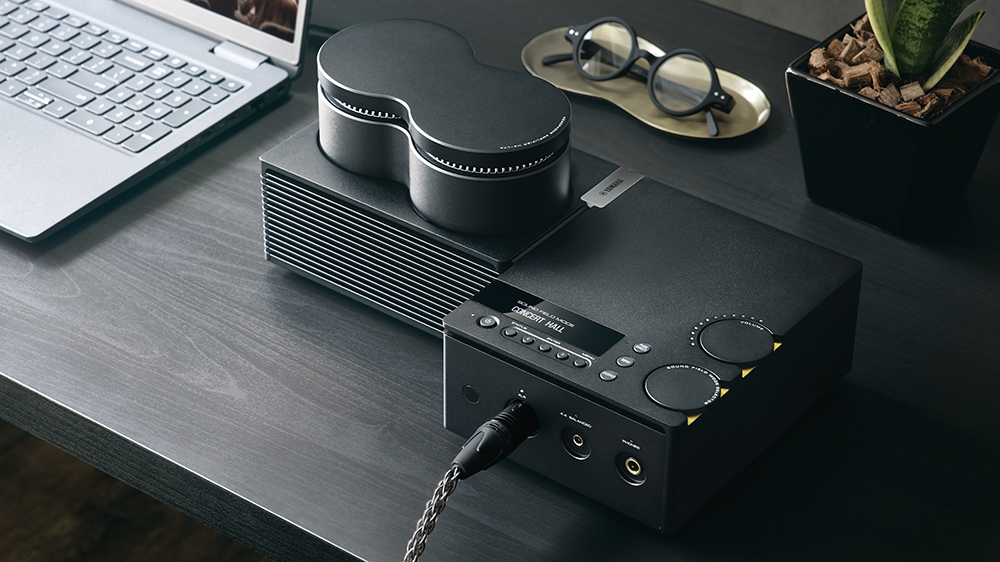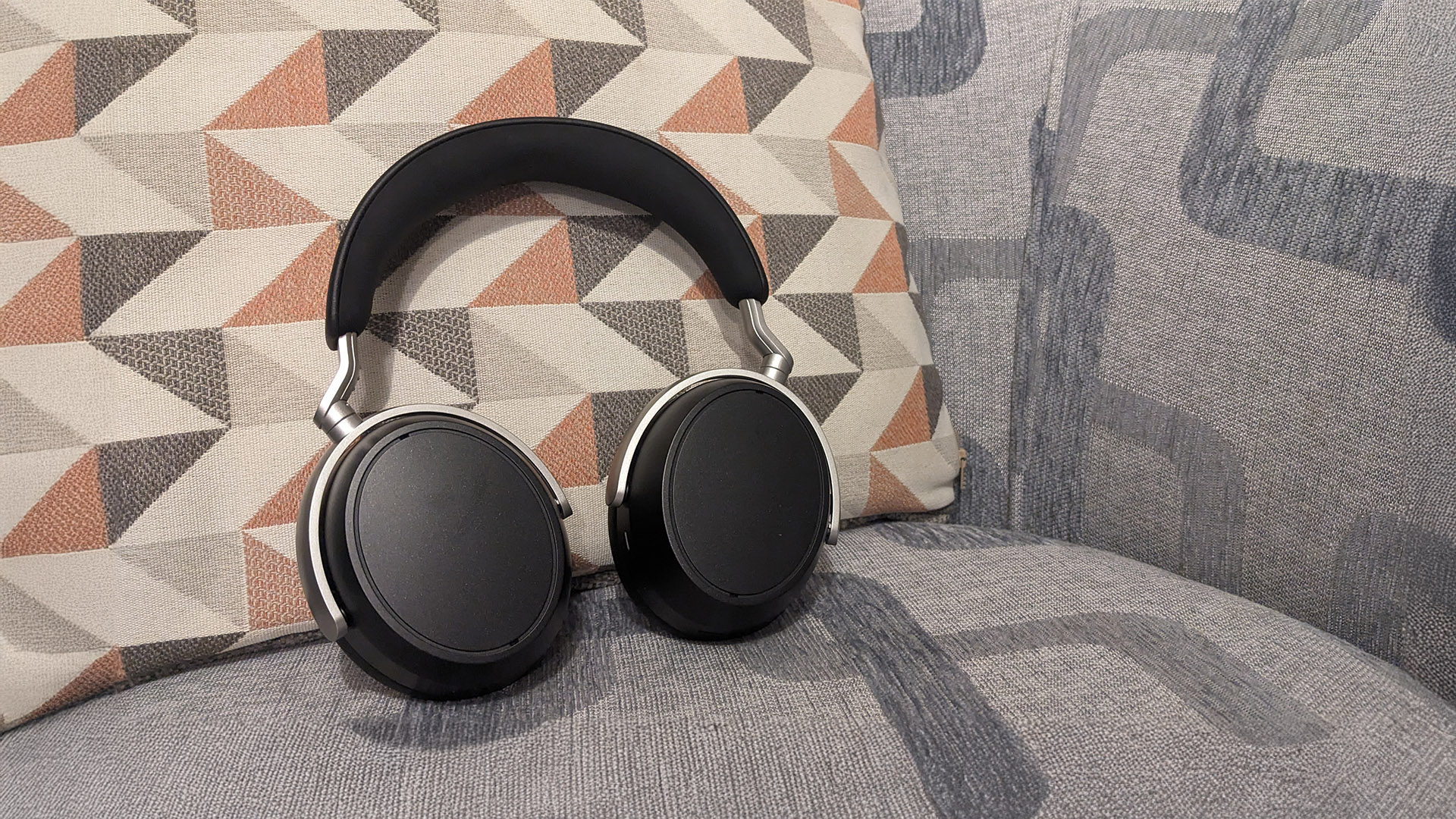50 years in the making: the inside story of the award-winning Yamaha YH-5000SE headphones
“We have just begun in the headphone category”

We’re seeing a lot of hi-fi brands looking back to move forward these days, creating products that are dedicated homages to, or have been overtly inspired by, those from their yesteryears, whether in celebration of a landmark anniversary or simply to leverage today’s apparent nostalgic yearning. But very few have executed the feat as well or as interestingly as Yamaha with its high-end YH-5000SE headphones.
If you’re sat there thinking, “I don’t remember any previous headphones of such naming”, you recall rightly. The new ‘special edition’ (hence the ‘SE’) model is a bold, ambitious and, if nothing else, thorough redesign of its HP-1 from the mid-1970s, which were not only the company’s first headphones but also one of the first pairs to implement a planar magnetic (Yamaha called it an ‘orthodynamic’) driver.
Fifty years later and following a several-decades-long absence of any such model in Yamaha’s catalogue, the YH-5000SE arrive with a modern-day orthodynamic driver, an aesthetic miles away from the HP-1’s Mario Bellini-designed one, and a name (and price) reflecting not their heritage link but instead their enviable position within Yamaha’s flagship 5000 Series.
In a matter of months, the wired headphones have already made a legacy for themselves, winning What Hi-Fi?’s 2023 Temptation Award in recognition of their unprecedented sonic ability at this level, a judgement shared by many other specialist audio publications and, seemingly, an even greater number of audiophile forum fiends.
With this in mind, you’d understand our desire to pounce upon the rare opportunity to talk to the engineers behind the YH-5000SE as well as its debut – and timely! – high-end headphone amplifier, the HA-L7A, to shed further light on how such landmark products came to fruition. Thank you to Ryo Hadano, Chikara Kobayashi, Ryota Sato (sound engineering team), Tsutomu Takeshita (product planning) and Kazuaki Ohsawa (global marketing) for their time and insights.
Back to the 1970s
Not all masterpieces can be created as speedily as the Strange Case of Dr. Jekyll and Mr. Hyde novel and Rocky screenplay (three days), though it may surprise you to read that the YH-5000SE were as long as seven years in the making.
It must have been sometime in 2015, then, that Mr Hadano found drawings of the HP-1 in the company’s old drawers and began studying its orthodynamic design – not so easy as there wasn’t much information available internally. So he only had the drawings and some external web pages to go off. Indeed, none of the engineering team were around in the HP-1 days, with only one having been born by that time – and only just!
The latest hi-fi, home cinema and tech news, reviews, buying advice and deals, direct to your inbox.

Mr Hadano was considering new products for Yamaha at the time and recalls how he was “impressed by the technology and mood” of the ‘70s headphones. The team was motivated by the idea to create a modern-day orthodynamic driver headphone that would “connect deeply with our customers (especially our passionate music lovers)” – even if the product would be rather niche. And besides, Yamaha knew people had been waiting for the brand to come back into the audiophile headphone market, not least those who still turn up to audio shows clutching their HP-1s.
“Fortunately, we were able to create a ‘quick & dirty’ prototype of the YH-5000SE by getting hints from those past drawings and cooperation from engineers both in and outside the company,” Mr Hadano tells us. The team tested the prototype’s sound and believed the orthodynamic design had the potential to withstand the music sources of today. Green light, full speed ahead.
But not so fast because, as the seven-year timeline suggests, the task at hand was far from simple…
Orthodynamic dead-ends aplenty
“Ortho” in Greek means “correct” and “straight” and, to quote Yamaha’s own literature, its first-generation orthodynamic driver was based on the idea of correctly driving the diaphragm for greater sonic accuracy. So just briefly on how the orthodynamic (planar magnetic) design works: an ultra-thin diaphragm etched with a voice coil sits between opposing magnets, so when a music signal flows through that patterned etching, it generates magnetic fields that interact with one another to make the diaphragm (and voice coil) move and produce sound. As a wider surface area is being driven and the design is lightweight, the orthodynamic driver can offer greater responsiveness and lower distortion than the conventional moving coil one.
Essentially, it was the result of hi-fi and headphone brands in the ‘70s experimenting with electrostatic and planar technologies in order to push the heights of consumer audio kit in line with the advancing studio recording ambitions of not only stereo tracks but also multi-channel (yes, this was when The Dark Side of the Moon changed the world, man). And it was a success.
“The HP-1 was very good, as our old engineers paid much attention to its development,” says the engineers today. “But it's not good enough for now.”
To that end, the HP-1 driver design was evolved in three key areas for the YH-5000SE. Firstly, the frame of the driver has a larger opening than the HP-1’s to allow for a higher sound passthrough from the diaphragm. Secondly, whereas the HP-1 had a fixed axis in the centre of the diaphragm (enabling stable manufacturing as well as an airtight seal for decent bass delivery), the new driver removes this completely, reducing the resonance it inherently causes and consequently allowing for greater dynamic and low-end expression. Thirdly, the HP-1’s thick felt damping was replaced by a micropore damper for increased attack and agility, as well as fewer losses in the mids and highs.
The result is, in Mr Hadano’s words, “a faster response than any other model we have developed in the past… the realism of the instrument's attack is outstanding”. OK, so that all paid off. But manufacturing a driver (which, we should say, is rather unusual due to its truly circular diaphragm and spiral, as opposed to switchback, coil) to get there was fraught with challenges.

“To achieve both sound quality and mass productivity, we tried over 1000 different prototypes of diaphragms and this is one of the reasons why it took so much time to develop this model,” says Mr Kobayashi. Why didn’t the team give up on the orthodynamic after the 500th? Because the headphones’ historical context was very important to the team.
“The moulding and pressing of the diaphragm film was very difficult,” explains Mr Hadano as he reaches for his box full of prototypes and tools to show us. “It is very delicate to touch and easy to deform when removing it from the mould. It took many trials and I crushed my mould many times! The magnet gap of an orthodynamic driver is extremely narrow, too, so strict manufacturing is required, with no slight deformation allowed.
“It took a long, long time… we hit many dead-ends during development… but we eventually found one method of making this process. But it’s top secret! Very few people in the company know the process.” In the interview room of five, only two of them knew – Mr Hadano and Mr Kobayashi. (Mr Hadano is, by the way, one of the internally trained ‘golden ears’ in Yamaha’s True Sound team, which signs off on the sound of products.)
And this is all before you get to the headphones’ “complicated... not easy to make” structure, which is made out of magnesium – chosen for its plastic-like lightness but greater strength and rigidity, and a big contributor to how comfortable, and consequently suitable for long listening, the YH-5000SE are. (They weigh 320g, in case you were wondering, making them lighter than the Focal Utopia (490g), Final D8000 (523g) and Sennheiser HD800S (330g) – all models which Yamaha says were used to compare and benchmark the YH-5000SE from a sound quality perspective.)
Considering the manufacturing complexity involved, it’s perhaps not surprising that the YH-5000SE are produced and assembled at Yamaha’s Kakegawa factory, where its grand pianos and reference audio components are made. “We have a lot of my factories – in Japan, Malaysia, Indonesia – but we decided to manufacture them here,” says Mr Ohsawa. “Nowadays it [production] is stable, but half a year ago there were still difficulties to overcome and, as the factory is only a 40-minute drive away, our best engineers could go there right away to fix something.”

Aiming (very) high – and trickling down?
Understandably, it’ll be harder for some more than others to perceive headphones costing as much as a second-hand car. (Oh, did we not mention the YH-5000SE’s £4799 / $5000 / AU$7499 price tag? Well, there you go.) That’s why Mr Kobayashi urges people to try them: “It's not only the sound but also the concept of the design – you cannot realise it until you wear them.”
The team acknowledged that there are opinions about the price (!) but told us it was confident with the balance between it and the quality on offer. Still, regardless of it being, in our minds, justified by the performance, such a figure will naturally rule out many head-fi fans as owners. So, as we first asked ourselves no more than 30 minutes into our initial listening of the YH-5000SE, will more accessible pairs come down the track? Yamaha couldn’t reveal any solid plans, but its head-fi future sounds promising, with the team agreeing that it sees high potential in the market – a market that, Mr Ohsawa notes, has a lot of dedicated shows around the world attended by many generations.
“We have just begun in the headphone category,” says Mr Takeshita, “and will try to continue to challenge ourselves in the future.” Hadano adds: “The knowledge gained through the development of these headphones will be carried over to future Yamaha head-fi products.”
So it seems like more a case of ‘when’ rather than ‘if’, even if the rest is hush-hush for now. Yamaha’s hi-fi division turns 70 next year so, more headphones or not, we hope to see special things from the brand in 2024. Watch this space...
A match made in head-fi heaven
The YH-5000SE are not so much ‘special edition’ headphones as a ‘special edition’ headphones package, coming with a dedicated stand, two types of cables – one 4.4 mm Pentaconn balanced, one 3.5mm (XLR leads are an optional extra), and two pairs of earpads – one suede, one leather. Why two earpad types? Yamaha's Affective Evaluation Group, which undertakes various sensitivity assessments for everything from speakers to musical instruments to understand how people feel about them, found that preferences were split across the two materials. Yamaha decided to include both to cater for different sound signatures and listening environments.
But there is an important ‘accessory’ that was made for the YH-5000SE and which marks another ‘first’ for Yamaha: a high-end headphone amplifier. Not a bundled accessory of course, the HA-L7A was born from the same team that created the headphones, allowing it to be a ground-up design and deliver sonic synergy between the two – though Mr Sato made a point of saying it was tuned using several other high-end headphones, too.

“We wanted it to drive all kinds of high-end headphones and bring out the maximum potential of all kinds of content,” he says. That second point was crucial to the amplifier’s design too, as the team realised that people nowadays listen to more than just music and so wanted to ensure the HA-L7A was a versatile performer for streaming TV shows and movies as well as various music. That’s why Yamaha has included a Sound Field mode, giving owners six DSP presets – including Cinema, Outdoor Live and Concert Hall – designed to create optimal sound depending on the music or video source being played. And it was one of the reasons it decided on a digital rather than purely analogue design, too.
Users of Yamaha’s AV receivers will recognise this as a feature the company has heralded for years in its home cinema offerings, while the patented Floating and Balanced Power Amplifier technologies at the core of Yamaha pre, power and integrated stereo amplifiers are present here too, naturally optimised for headphone applications. “Entering the headphone amplifier market, we wanted to stick to our strong points,” says Mr Sato. “The HA-L7A takes both the advantages of our hi-fi products, which have been around for almost 70 years, and our 35-year AV receiver history.”
The ‘dimension’ brought by that unique Sound Field technology is reflected in the HA-L7A’s physical design, which is certainly a talking point owing to its distinct ‘L-shape’. But that shape is central to its acoustic engineering too.
‘Sticking out’, you could say, are dual toroidal transformers, which the power supply uses independently for the minute-signal circuitry and the amplifier section. They sit directly above the power supply board, minimising the circuit path, and this – plus the ground-isolated circuit boards and heavy-duty chassis design – is all in the name of eliminating noise.
“When you’re listening to speakers, the noise is not such a big issue compared to headphone listening [where] noise can be very easily recognised,” explains Mr Sato.
We’re yet to go the full twelve rounds with the HA-L7A, although our first impressions from the High End Munich show earlier this year were positive. And Yamaha is naturally confident in its ability at its price point of £3499 / $3999.95 / AU$6999: “We compared this product with competitor models using reference sources and headphones and found that the sound pressure range, soundfield and localisation were as we intended,” Mr Sato concluded.
A match made in head-fi heaven? We'd be the last to bet against it.
MORE:
Read our Yamaha YH-5000SE review and hands-on Yamaha HA-L7A review
My success story of the year was also the biggest surprise
I've heard over 150 products this year, and these are my 5 hi-fi highlights

Becky is a hi-fi, AV and technology journalist, formerly the Managing Editor at What Hi-Fi? and Editor of Australian Hi-Fi and Audio Esoterica magazines. With over twelve years of journalism experience in the hi-fi industry, she has reviewed all manner of audio gear, from budget amplifiers to high-end speakers, and particularly specialises in headphones and head-fi devices.
In her spare time, Becky can often be found running, watching Liverpool FC and horror movies, and hunting for gluten-free cake.
